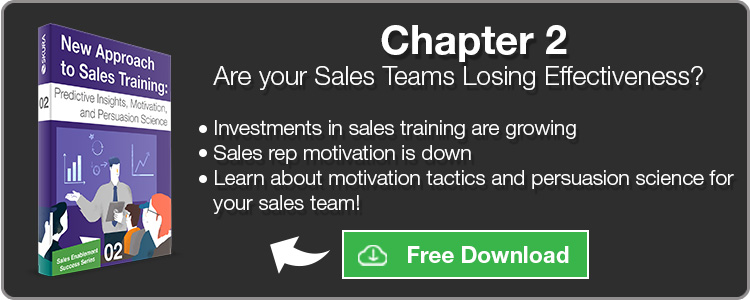Nancy Nardin gave a presentation last week at the Apttus Accelerate Sales Event where she discussed the ‘Sales Technology Stack Maturity Model’ – a combination of 2 hierarchies used for assessing a sales stack and making decisions about new sales technology investments.
The maturity model is an innovative concept for framing the challenge of picking the right digital sales aids for your sales process.
Today’s article explores the sales stack maturity model created by the team at Smart Selling Tools.
The Challenge of a Sales Technology Stack
Sales stack technology investments like digital content management and sales performance management tend to occur as reactive decisions aimed at solving immediate pain points, rather than proactive solutions for holistic improvements.
The result is a bloated sales stack industry filled with several point solutions that all claim to solve ‘the problem’ with your digital sales process. Consider Forrester’s recent Sales Enablement Vendor Landscape report, where over 100 possible vendors addressed at least one of their six execution goals, but only 18 made it into their vendor landscape report with three or more of those goals being addressed (Source: Forrester, 2016).
Our platform was among the 18, but sales enablement encompasses only a few categories of the inside sales landscape.
As Nancy puts it “your sales stack is only important to the extent that it helps you improve sales performance”
The Sales Technology Stack Maturity Model
Nancy explains 2 secrets to revenue performance:
- Sell more
- In less time
If the sales tech stack you’ve built doesn’t accomplish this, it’s not delivering the right set of outcomes needed to be on a sales stack.
The Hierarchy
The maturity model includes a revenue hierarchy of needs similar to Maslow’s Hierarchy of Needs. An effective sales stack helps the seller achieve ‘self-actualization’ – The realization of one’s talent and potentialities.

(Image Source: Smart Selling Tools, 2016)
Therefore, a complete sales stack must address the revenue needs within each of the five stages.
Earlier in 2016 we also published an article relating to sales stack building, and found that only five categories of tools made up an effective sales stack.
Here's how they related to Nancy's hierarchy:
Someone to sell to – Tools and processes (T&P) that reveal opportunities in the market, and help prioritize selling effort and database upkeep. In our article we called for a lead generation tool such as LinkedIn or Salesloft.
A way to engage – T&P that build interest and momentum, and allow the sales person to get emails opened and calls accepted with insights along the way. In our article we called for an email cadence and data tool that consolidates buyer insights and frees up selling time.
Compelling value – T&P that enable a sales rep to use digital content and other materials to align the buyer’s needs with the seller’s solutions. In our article we called for a sales enablement tool such as our SKURA SFX program.
Purchase – T&P that enable the sales rep to create contracts in real time, generate quotes, and capture signatures. In our article we explained that this kind of tool may reflect many different applications across a variety of industries, and a decision must be context sensitive to those ‘purchase’ level needs.
Buy again – A sale only consummates the buyer-seller relationship, and future opportunities for cross selling and upselling can’t fall through the cracks of a bad sales stack. You need a tool that enables this kind of post-sale follow-up and continuous interaction. In our article we called for a CRM system that fully integrates with the above noted technologies.

(Image Source: Smart Selling Tools, 2016)
Technology Maturity
The second element is technology maturity. You’ll have to reach out to Nancy for the specifics in each category, but the maturity stages best reflect IT hindsight and foresight capability.

(Image Source: Gartner, 2012)
The ‘white belt’ in the Maturity Model includes sales tech solutions that only offer descriptive analytics or hindsight perspectives, where more mature sales stack technologies now offer predictive, and even prescriptive analytics that achieve the goals of ‘selling more in less time.’
Building your Sales Stack
SKURA’s SFX sales enablement platform won a Top Sales Tool Award for 2015 and 2016 from Smart Selling Tools. We understand that less is more when it comes to sales efficiency and enduring customer relevancy.
If you’re building your sales stack in 2016, I suggest reading our sales stack building guide.
We’ve helped businesses across several industries create a digital sales stack with comprehensive end-to-end data integration that actually reduced non-essential sales stack elements from a cluttered tech portfolio. Request a quick demo below and let our sales experts show you how easy it is to build your sales stack.












